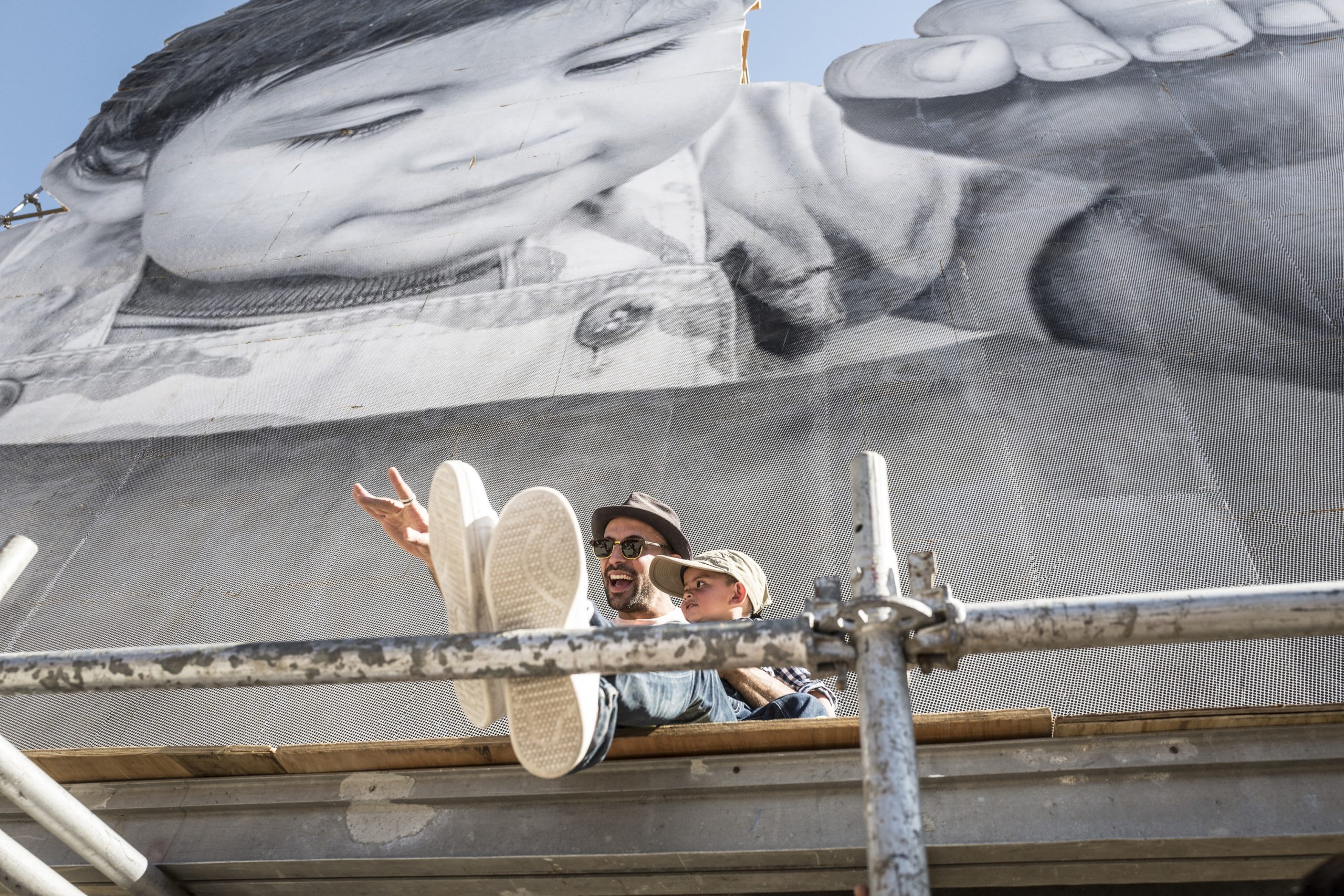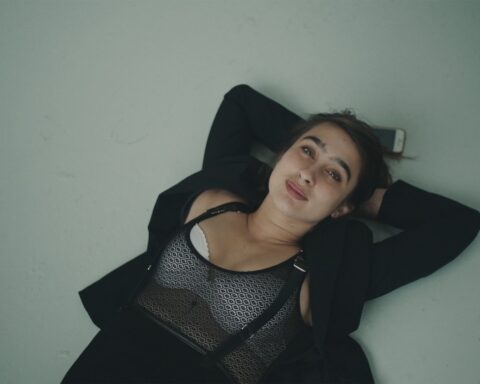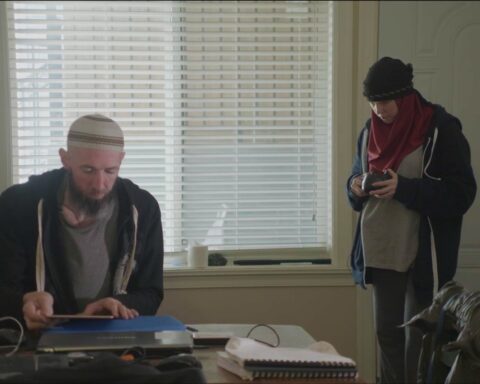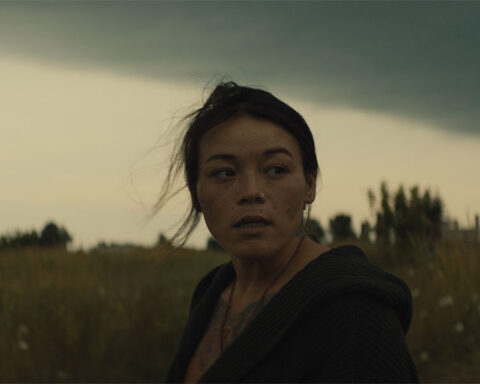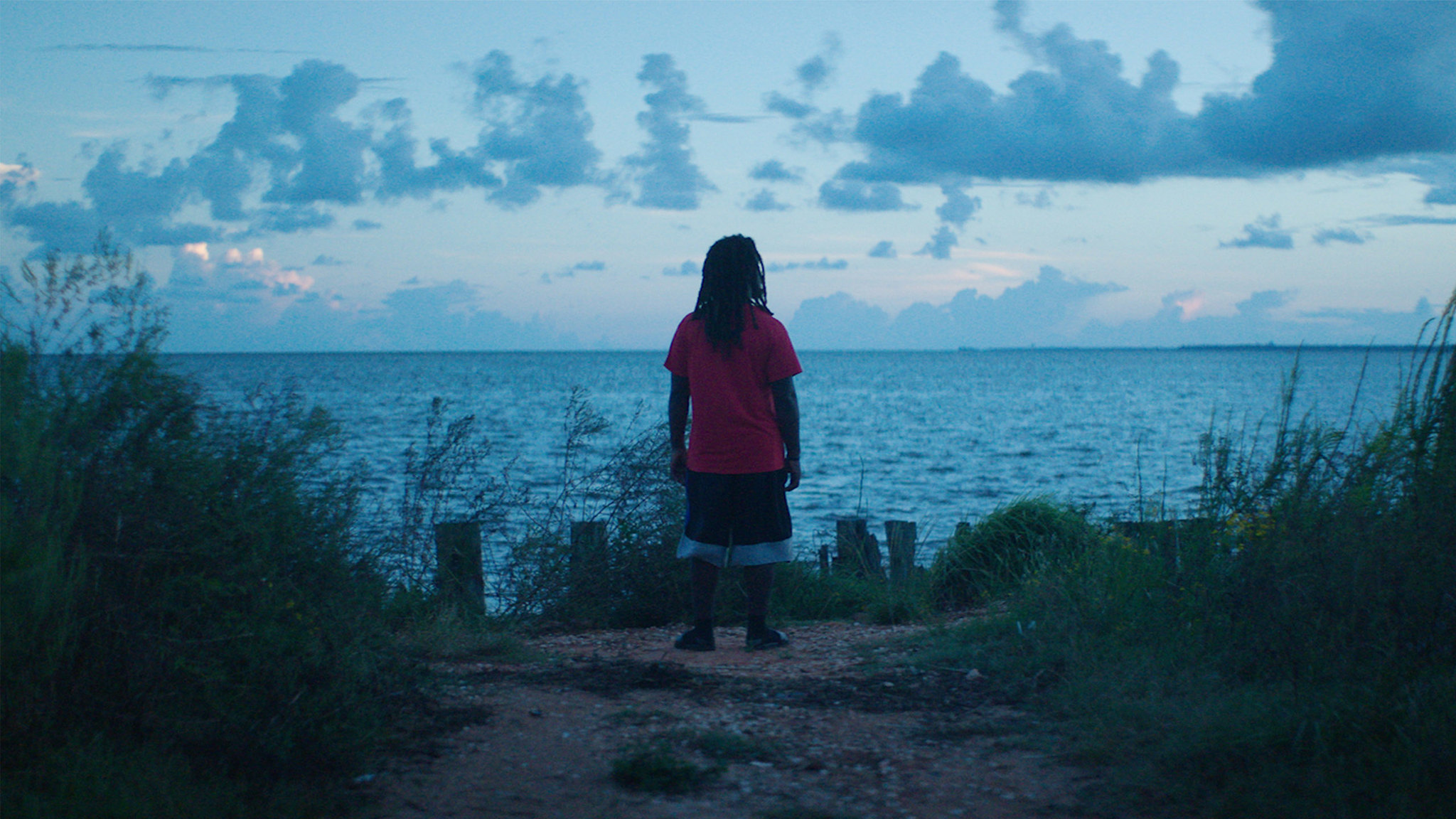Paper & Glue
(France, 94 min)
Dir. JR
Most people outside of France know the artist JR through his collaboration with Agnès Varda on the inspiring documentary Visages Villages/Faces Places (2017) in which the venerable filmmaker teamed up with the streetwise photographer to travel around France making portraits of neglected members of society—the working class, poor and homeless—then printing them on a grand scale and presenting them publicly. A Cannes award winner and Oscar nominee, Faces Places proves to have been the perfect entrée for JR to reach a larger audience. With Paper & Glue, he seals the deal, showing the best of the work he’s made over his 20-year career while establishing his credentials as a humanist with a hard edge: a self-styled “photograffeur,” a shutterbug and graffiti artist, whose interventions have a social, if not a political, impact.
JR cleverly introduces us to him and the film through a “getting to know you” talk he has with the inmates of a maximum-security prison in Tehachapi, California, with whom he wants to collaborate on a new project. He tells them about what happened at the Mexican-American border, where he shot and installed a photo of an innocent local child, Kikito, after visiting both countries. JR’s team mounted Kikito’s friendly image on a giant scaffolding so it could be seen across the border into the U.S., about an hour by highway from San Diego. He then organized a picnic with tacos served to people on both sides of the border while mariachi music was played to the enjoyment of everyone. Even the senior U.S. border guard is seen having fun and talking with a woman whose parents were illegally in the country at the time. (They have since been accepted in the U.S.)
JR takes us back to Tehachapi, where the hardened criminals have now opened up to him—as has the audience. The men want to know what JR wants them to do and why. His response to them, “I don’t know; let’s see,” indicates his working philosophy: he believes in improvisation and doesn’t want to be overly didactic. With the inmates talking about the anger brought on by their racial divide—there are approximately equal numbers of Blacks, Hispanics and mainly right-wing whites—JR’s proposal is to create something they can work on together. He takes still photos of them all while also giving each man complete freedom to express himself during a video shoot. Two weeks later, he returns with former prisoners and guards and huge blow-ups of every current inmate. Working together with glue and paper, they paste the images on the prison yard, which they can’t see in full but the images appear beautifully when shot from above by a drone camera.
JR’s film then takes us back to France, to La Bastille, where graffiti was written by prisoners 200 years ago. He evokes his past as a young man making work with spray cans, wit, and anger, telling us of the moment when he found an abandoned camera in the subway and made it his own. First used to document his graffiti work, the photography took on greater meaning when he met Ladj Ly, the brilliant, tough Black artist, whose work as the chronicler of France’s worst ghetto in Les Bosquets banlieues inspired JR to show the abysmal conditions that spurred the infamous 2005 riots in Paris and eventually most of the country.
Ladj and JR became famous in France for provoking those insurrections. The photo JR took of Ladj holding a camera like a gun became iconic as did their fierce extolling of the poor, ill-educated, angry youths of the banlieues, where expectations for any of them to succeed couldn’t have been lower. JR’s photo work took shape during this period, with his “Portraits of a Generation” – huge images of unknown racially demeaned kids – posted onto hoardings over Paris making a truly radical statement. After the riots, JR had to go into exile for a year while Ladj Ly actually went to prison.
But the two persisted and the justness of their cause eventually won over Parisians and many people throughout France. Through archival footage, much of JR and Ladj’s rebellious work is seen in the film, which then pirouettes back to the present where the two have become famous. Ladj Ly’s first feature film Les misérables won the Jury Prize at Cannes and was nominated for an Oscar, and his earlier documentary work was lauded in France and at international festivals. Kourtrajmé, the collective which the duo formed with fellow artists Kim Chapiron and Romain Gavras, remains active. The hands-on school they created is an inspiration to disaffected and radical youths in France today.
JR’s work with the school takes us to the present where he performs yet another sleight-of-hand, talking to a Brazilian student at Paris’ Kourtrajmé about his work in establishing Rio’s Casa Amerala, a cultural centre and school that he created after working in Brazil’s first favela Morro da Providencia on the project “Women are Heroes.” Here again, we see JR as an icon for good, making something peaceful and positive in the midst of the bloody chaos of one of the world’s harshest ghettos.
Watching Paper & Glue, one can’t help being impressed by JR’s artistry and convictions. He truly marks art that empowers people while never forgetting the terrible circumstances that surround and often overwhelm individuals trapped in systems that are not of their own making. Watching him, you wonder “how does he do it” and, quite frankly, “how is he funded?”
However it’s done, the work of JR is certainly valuable and worthwhile. This film doesn’t have the wonderful chemistry between Varda and JR that made Visages villages so remarkable. Perhaps a future film could do that with Ladj Ly and JR. In any case, Paper & Glue is a documentary well worth viewing and recommending to others.




